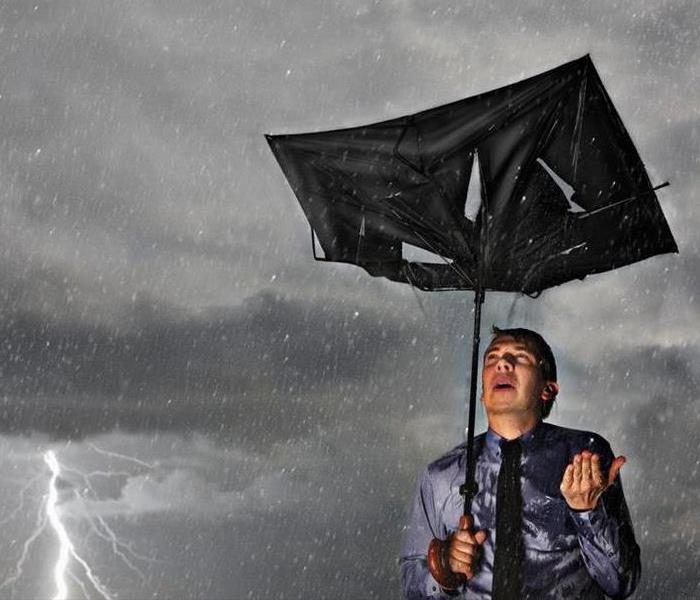Surviving Thunderstorms Outside
10/21/2019 (Permalink)
Minimize your risk. If you absolutely cannot reach shelter during a lightning storm, do everything you can to reduce your risk of being struck by lightning.
- Move to a lower elevation. Lightning is much more likely to strike objects at higher elevations. Do what you can do get as low as possible.
- Avoid large open spaces where you are taller than anything else around you, like a golf course or soccer field.
- Stay away from isolated objects such as trees and light posts.
- Get away from unprotected vehicles, such as golf carts, and unprotected structures, such as picnic shelters. Avoid long metal structures, i.e. bleachers.
Get out of the water. If you are fishing or swimming, get out of the water immediately, and move away from the body of water. Being near water is extremely dangerous during a lightning storm.
Spread out. If you are caught in a lightning storm with a group of people, maintain a distance of at least 50–100 feet (15.2–30.5 m) between each person. This will reduce the risk of lightning traveling from one person to another.
- Take a headcount after every close strike. This will ensure that anyone struck will get emergency attention quickly.
Remove your backpack. If you are hiking with a metal frame backpack, remove it as soon as you detect lightning. Make sure to leave it at least 100 feet (30.5 m) from wherever you are taking shelter.
Assume the “lightning crouch”. Squat down with your feet together, your head tucked to your chest or between your knees, and your hands covering your ears or flat against your knees. Do not lie flat on the ground, as this gives the lightning a larger target.
- This is a difficult position to hold, and it definitely doesn't guarantee your safety. However, by making it easier for a lightning strike to flow over your body rather than through vital organs, you may be able to sustain a smaller injury from it.
- Cover your ears and close your eyes to protect against nearby thunder and bright lightning flashes.
Be alert for an imminent lightning strike. If lightning is about to strike you or strike near you, your hair may stand on end, or you may feel a tingling in your skin. Light metal objects may vibrate, and you may hear a crackling sound or "kee kee" sound. If you detect any of these signals, assume the lightning crouch immediately.
Wear rubber boots. They are made of a material which is a bad electrical conductor.





 24/7 Emergency Service
24/7 Emergency Service
